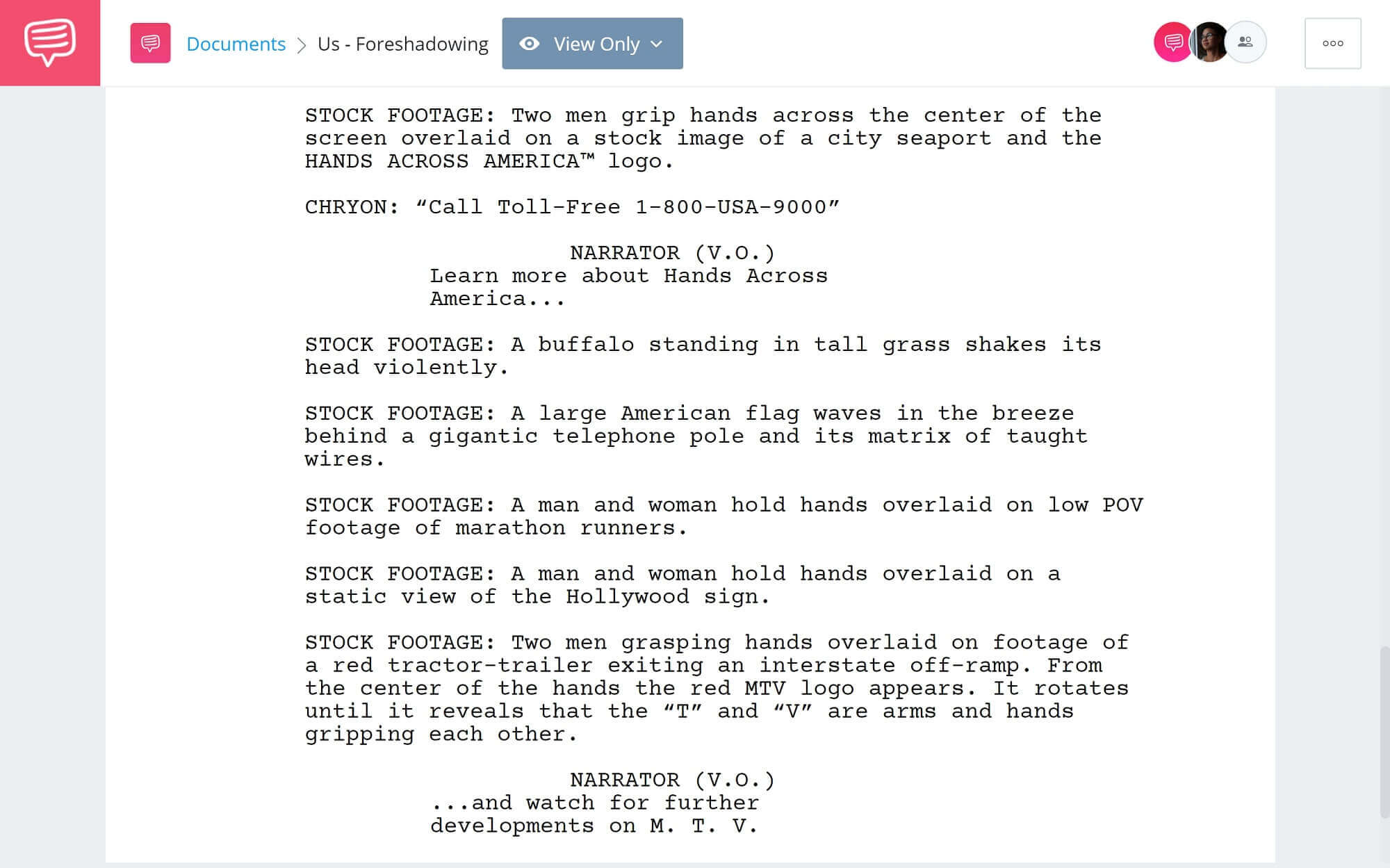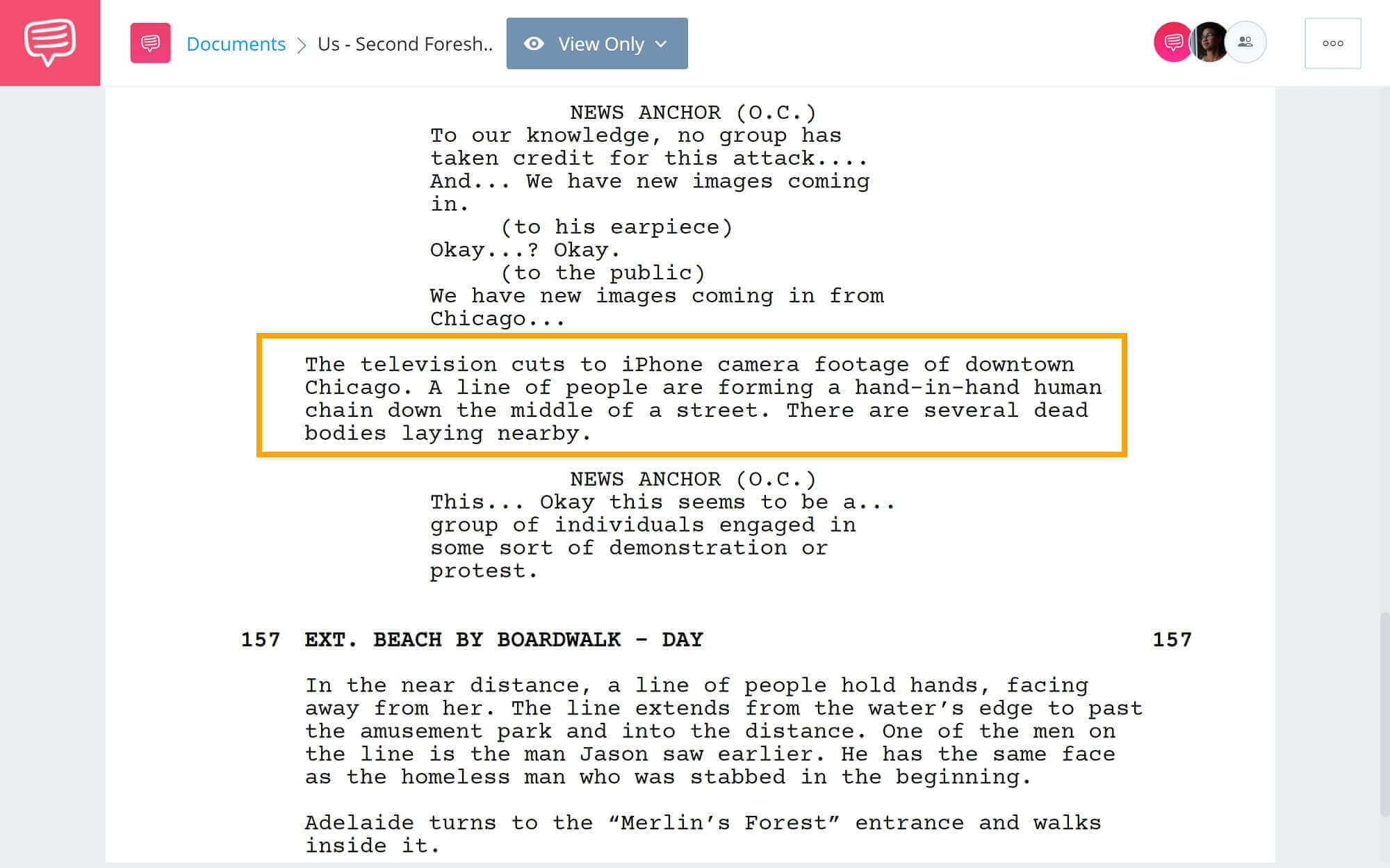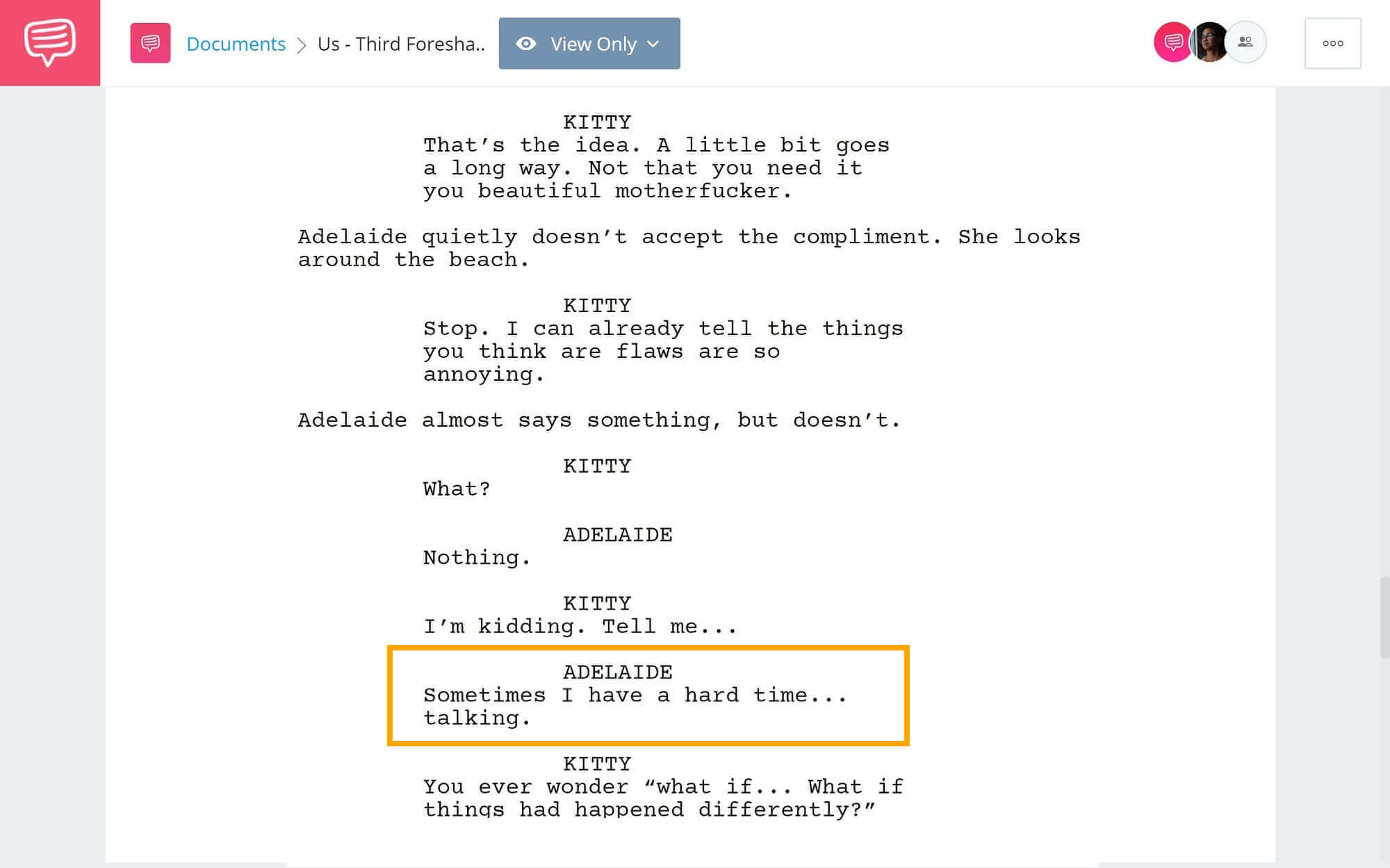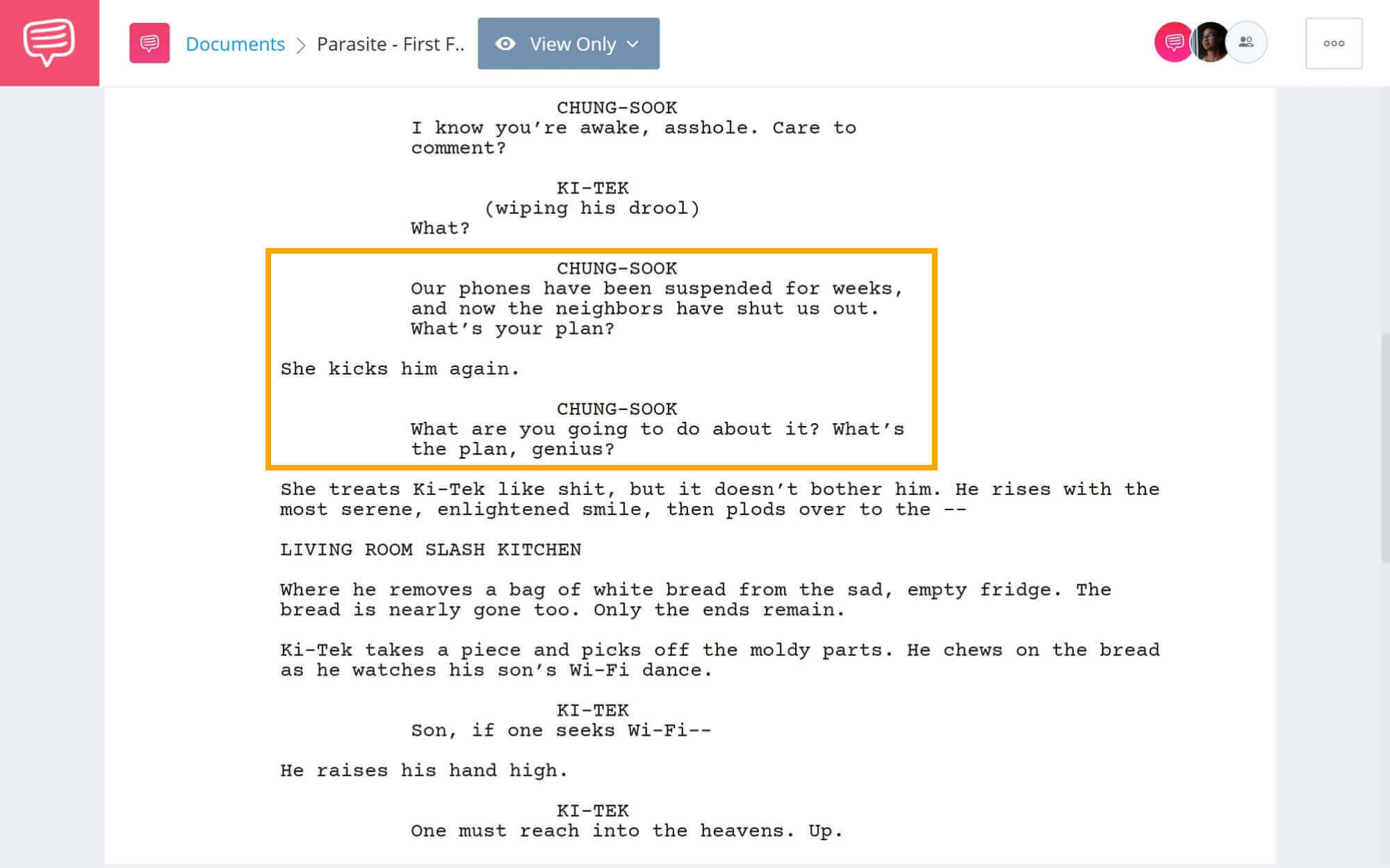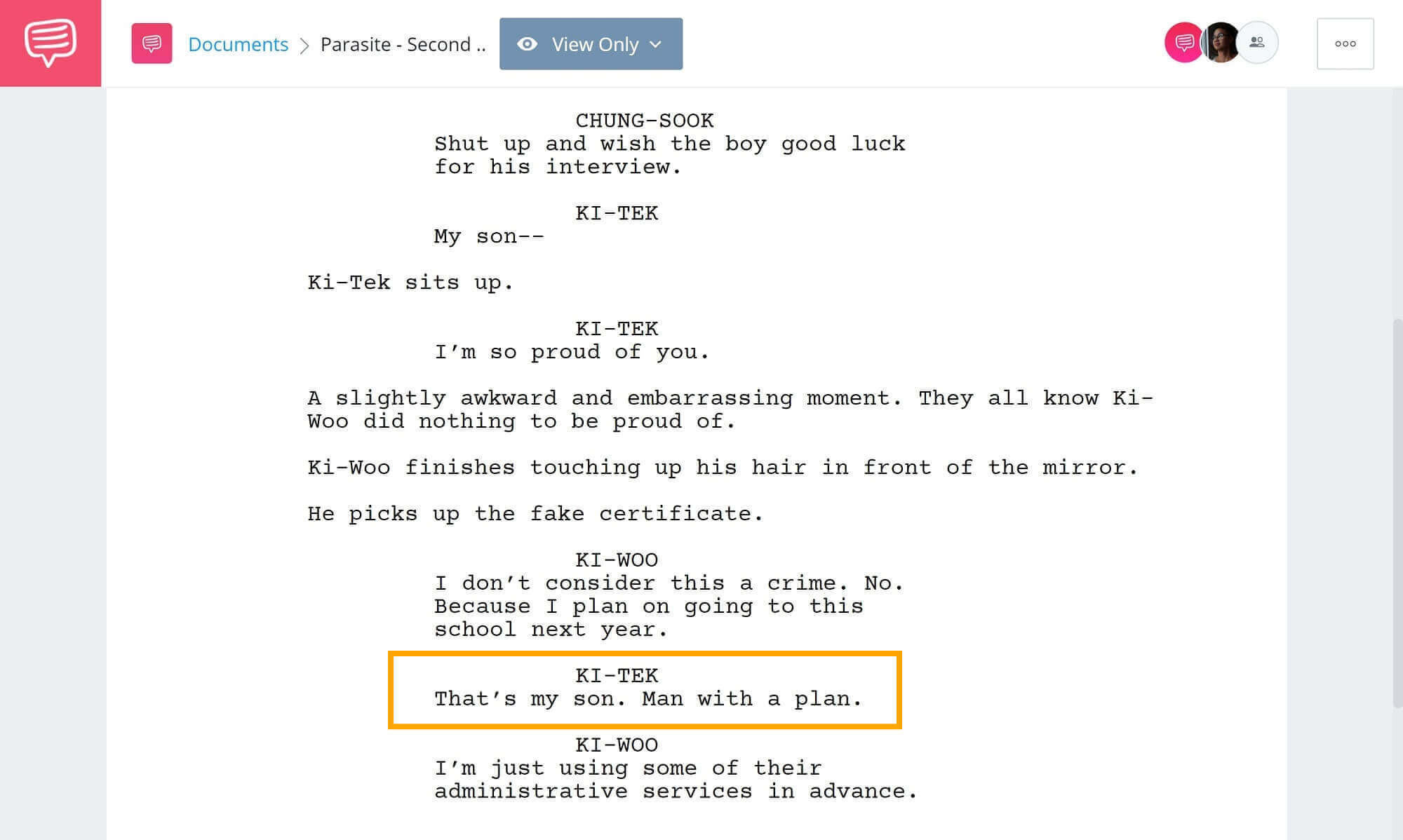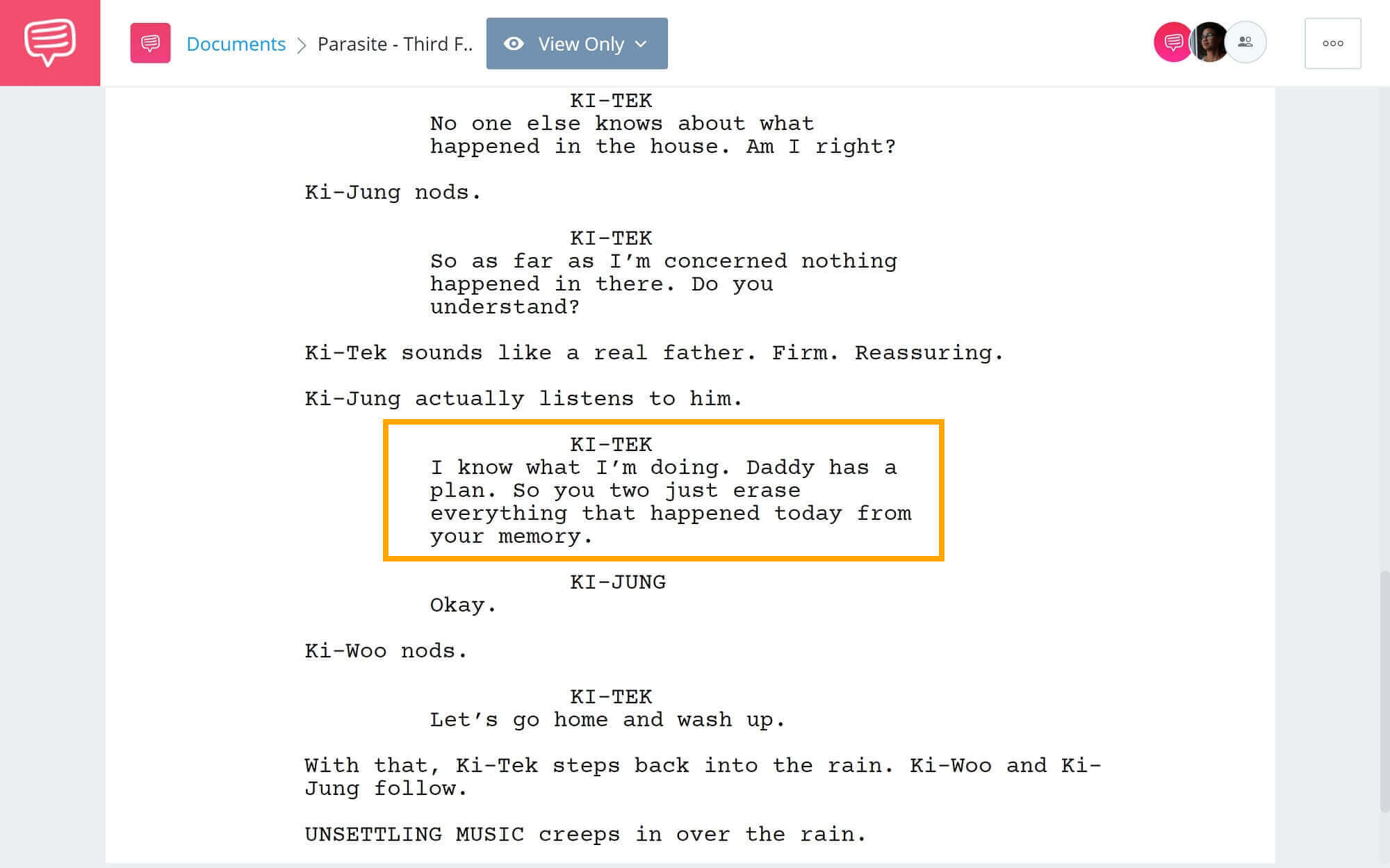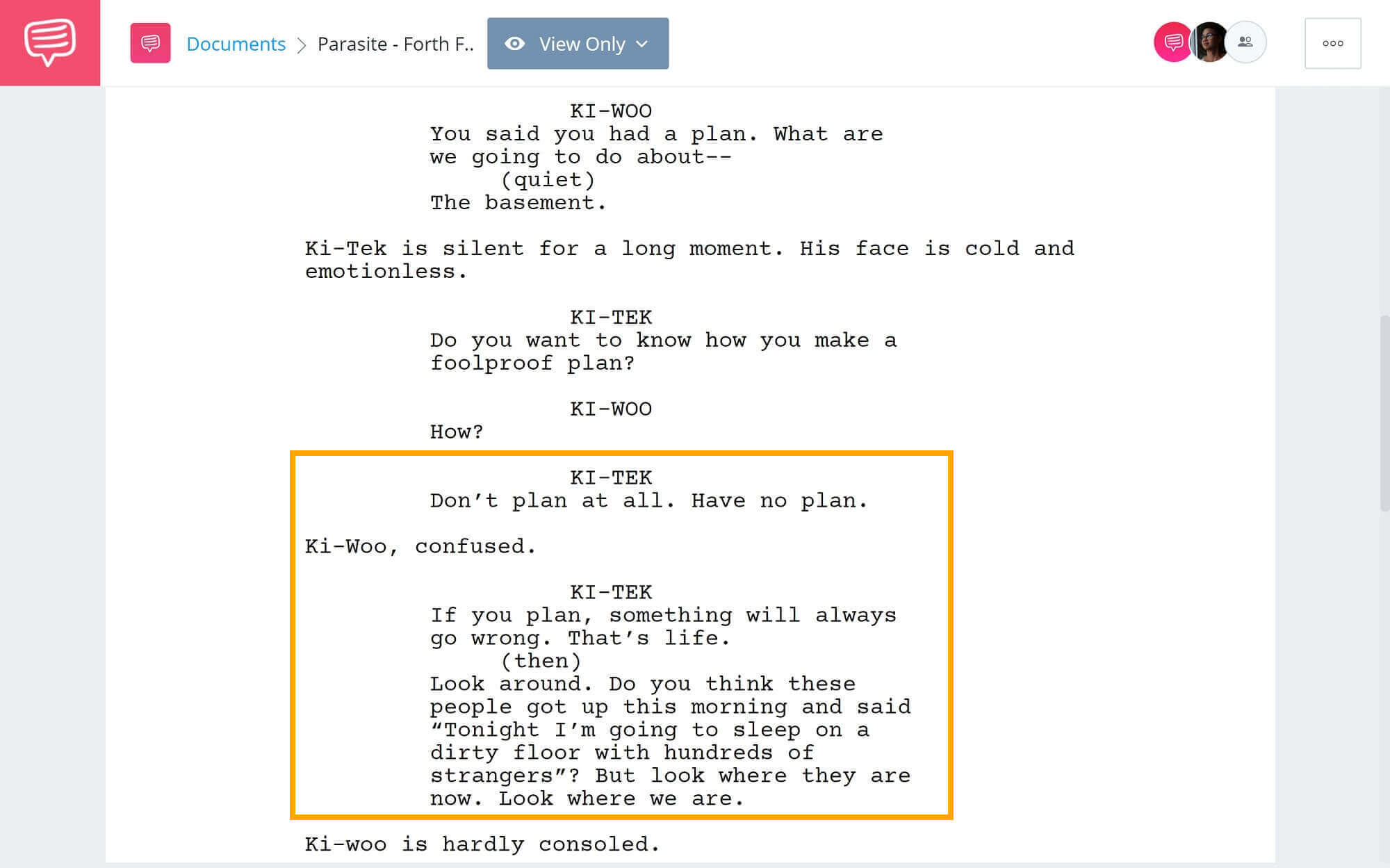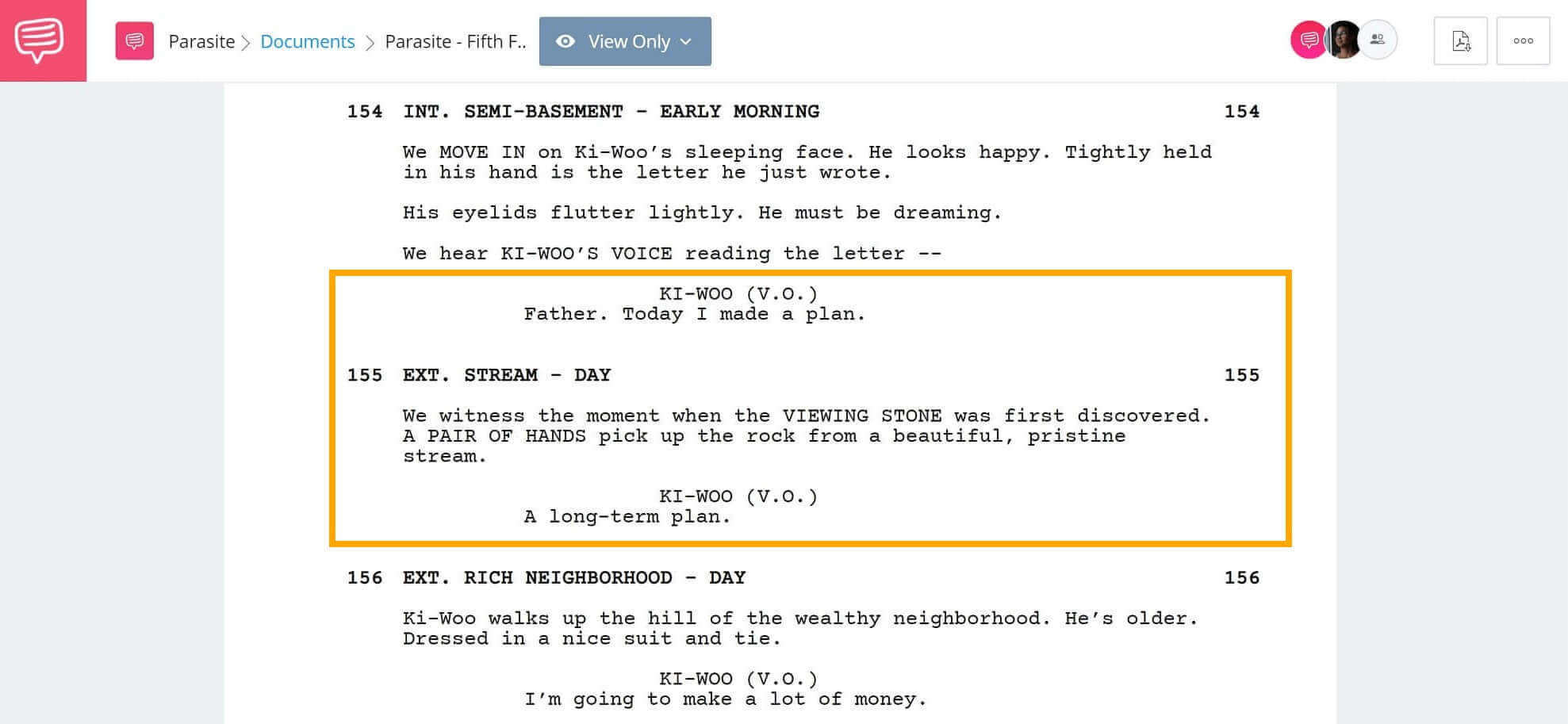Foreshadowing is an important element of screenwriting. It’s a fantastic tool you can use to create a layered and intriguing story that will keep your audience captivated and engaged. But how do you use foreshadowing, and how does it work? In this article, we’re going to dissect some of the best foreshadowing examples in movies like Us and Parasite to show us how master filmmakers use foreshadowing to create great stories. Let’s start with our video breakdown of this technique and how it works.
Examples of Foreshadowing
The two types of foreshadowing
If you haven't read our "What is Foreshadowing" post, feel free to familiarize yourself with the concept before we dive into examples of foreshadowing here.
First, there are two main types of foreshadowing examples we'll be covering. Each takes a slightly different approach but knowing the difference will allow any screenwriter to wield this tool like a pro.
INDIRECT FORESHADOWING
In indirect or covert foreshadowing, the story hints at a future event with subtle clues placed throughout the plot. The viewer most likely won’t understand the meaning of the clues until or after the event actually happens.
DIRECT FORESHADOWING
In direct or overt foreshadowing, the story openly suggests a future twist, event, or problem. This type of foreshadowing can be done through dialogue, a prologue, or a prophecy.
Now that we’ve established the two types of foreshadowing, let’s move on to a couple of ways to use them in your script.
Show Not Tell
Foreshadowing examples with imagery
One way that writers use foreshadowing is through imagery. Writer/director Jordan Peele’s unsettling thriller Us is a great example of how to use it effectively.
We will be revealing the ending so this is your official spoiler warning!
Peele wastes no time when it comes to giving the audience (and read) and example of foreshadowing. In the establishing shot of Us the audience is shown a commercial for “Hands Across America.” Wrought with vintage imagery, we see people holding hands, united in their quest for peace.
Click the image below to read the entire scene.
Foreshadowing Examples in Movies • Read Full Scene
Towards the end of the commercial, we see an image of red paper figures holding hands, while a voiceover says the line “this year, six million people will tether themselves together.”
While it may not seem to make sense to the audience at first, we later learn that the commercial directly influenced Red, the antagonist of the film. Eventually it would lead to the uprising of the Tethered.
This is also a good indirect foreshadowing example. These clues don’t click into place until the Tethered are shown holding hands on the boardwalk later in the film. But when that happens, we realize that the commercial we saw in the beginning holds real meaning in this story.
Below is a scene where the foreshadow example from the beginning pays off.
Foreshadowing Examples • Read Full Scene
Another important foreshadowing example comes from the same establishing scene. When the television screen goes black, we see the reflection of our protagonist, Adelaide. This reflection establishes the idea of duality, a very important theme throughout the film.
In a more literal sense, this reflection foreshadows the twist ending — that the Adelaide we see as a protagonist has actually been her shadow doppelgänger all along. Peele plays with shadows and reflections throughout the film, giving the audience subtle clues that the characters may not always appear to be who they say they are.
Foreshadowing through imagery may seem daunting, but can be a highly effective tool for your script. Think outside the box and create images in the action lines. Showing can be just as effective as telling.
Related Posts
What They Say
Foreshadowing examples with dialogue
We've seen how imagery can be used to foretell later events. But what are examples of foreshadowing using dialogue? You can place information that will be useful later into conversation and seemingly offhand commentary.
In Us, Peele uses covert foreshadowing in his dialogue. Like in the scene where the Wilsons meet up with the Tylers at the beach.
As Kitty and Adelaide are mingling, Adelaide says, “I have trouble talking.” In the context of the dialogue, it’s a natural, fitting statement someone might say in a conversation with an acquaintance.
But knowing the twist ending, this is just another critical piece to the foreshadowing puzzle. Click the image to read the entire scene and see if you can spot any other examples foreshadowing Adelaide's true identity.
Examples of Foreshadowing with Dialogue • Read Full Scene
Conversely, Bong Joon-ho’s Parasite weaves direct foreshadowing into dialogue. A present theme throughout the script is the mention of planning. This theme occurs often and not only drives the plot forward, but also suggests a future problem.
For a quick summary of the entire film, watch our story breakdown below. Again, this is your spoiler warning for Parasite.
Parasite Story Breakdown • Subscribe on YouTube
Examples of Foreshadowing in Movies • Read Full Scene
The audience gets hints of a future issue then and in later dialogue where Ki-Taek praises his children for their planning and resourcefulness, particularly Ki-Woo. The opposite of Ki-Taek, Ki-Woo is always thinking ahead, always seeking a plan.
In this next scene, we see this motif of "plans" and "planning" once again.
Foreshadowing Examples in Movies • Read Full Scene
While Ki-Taek has done little to better the Kims' situation, Ki-Woo’s planning is what leads the Kims to their positions with the Park family. Every success leads the audience to believe that everything has been resolved...
...that is until the turning point.
At this point, Ki-Taek seemingly steps up for the first time in the script, reassuring his children and insisting that he has a plan.Related Posts
The Kims sneak out of the Park home after their unexpected and adrenaline-fueled encounter with Moon-Gwang and Geun-Se in the basement. This leaves Ki-Woo, the “man with the plan,” at a loss. His plans have failed and he doesn’t have any backup. We get our first real confirmation that things are truly amiss.
Foreshadowing Examples & Motifs • Read Full Scene
However, when Ki-Woo confronts Ki-Taek later, it results in a heated exchange where Ki-Taek admits his reasoning.
An example of foreshadowing connected to theme • Read Full Scene
Ki-Taek’s words in this exchange foreshadow the climax of the film. In the dialogue, he states that the lack of a plan means lack of failure. These words come back to bite him when his lack of planning directly results in the escape of Geun-Sae. And the events that lead to the bloody showdown where Ki-Taek kills Mr. Park.
At the end of the film, Ki-Woo again finds himself in a defeated position. His father is trapped, locked away in the Park home with no means of escape. But when all seems lost, the theme that had been foreshadowed throughout the film became apparent. Ki-Woo resolves to make a plan to save his father.
Here, this final foreshadowing example continues the theme as Ki-Woo vows to rescue his father.
Foreshadowing Examples • Read Full Scene
Bong Joon-Ho does an excellent job of simultaneously subverting audience expectations and laying down clues that lead to the ending.
While imagery can be impactful, opting for foreshadowing through dialogue can be just as interesting for your audience to discover.
Whether it’s subtle or outright, these foreshadowing examples prove that it can lead to a much bigger payoff at the climax of the story. Try to work unique bits of information into the beginning of your story to create a puzzle for your audience to solve throughout the script. It will help enhance the climax and give a much better payoff.
Related Posts
UP NEXT
How to write with subtext
Now that examples of foreshadowing in movies have shown us how write "underneath the surface," subtext is another device that can be used to add layers to your script. In this article, we will give you better insight on how to use subtext to create a well-rounded story!

